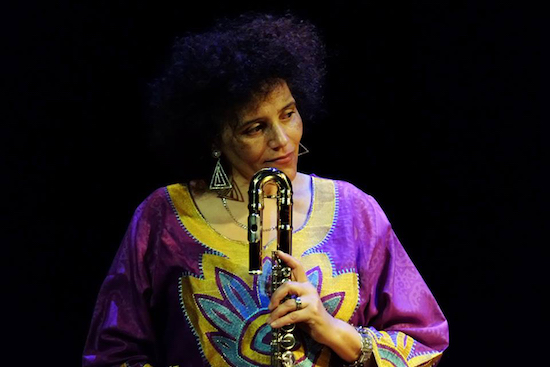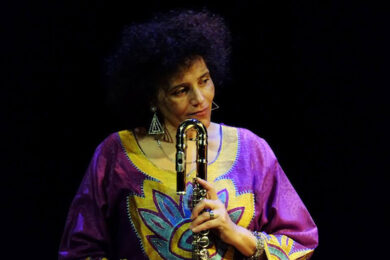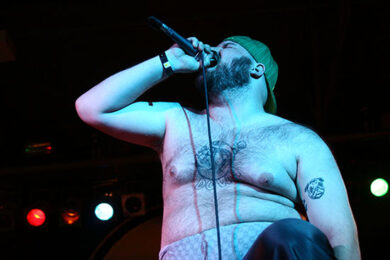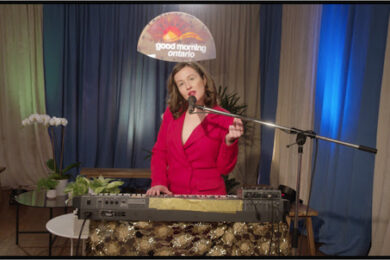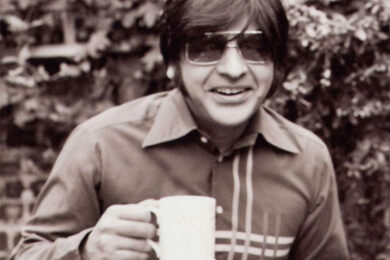Nicole Mitchell (photo by Lauren Deutsch)
America may be a trashfire under Trump, but its creative musicians continued to offer hope of another world. Avant-garde masters like William Parker, Roscoe Mitchell and the creator of The Quietus’s number one jazz album of 2016, Wadada Leo Smith, remained as active as ever, often working with new collaborators. Brilliant albums from Roscoe Mitchell, Nicole Mitchell and Tomeka Reid underlined the vitality of the AACM (Association For The Advancement Of Creative Musicians), 51 years on from its inception. The passing of ACCM co-founder Muhal Richard Abrams brought a sad note to November, but the great composer, pianist and educator’s legacy lives on. Meanwhile, a younger generation of avant-garde players continues to push the boundaries of jazz and modern composition, with the likes of Tyshawn Sorey, Tomas Fujiwara, Jaimie Branch, Matt Mitchell, Kate Gentile and Brandon Seabrook all releasing impressive leader albums and collaborations.
It’s perhaps a stretch to call Simultaneity, the latest from Joshua Abrams’ Natural Information Society, a jazz album, but it’s visionary music that draws on the bassist’s jazz background to create a hypnotic fusion of gnawa, krautrock and minimalism. On a more straightahead tip, Ambrose Akinmusire, Vijay Iyer and Craig Taborn all released strong albums of creative contemporary jazz, while Kamasi Washington delivered a winning EP of spiritual jazz. Fusion continues its revitalisation, from Thundercat’s sweetly skewed yacht rock and Butcher Brown’s febrile jazz-rock, to Harriet Tubman’s heavy funkadelia and Vibration Black Finger’s UK club take on Electric Miles.
UK jazz and improv continued to provide an antidote to Tory-Brexit dystopia, with Binker & Moses breaking through with their second album, Journey To The Mountain Of Forever (Gearbox). This ambitious double set paired the sax and drums duo’s punchy neo-bop with a second disc of spiritual jazz performed by an expanded group including free improv maestro Evan Parker, trumpeter Byron Wallen, and harpist Tori Handsley. Saxophonist Denys Baptiste released one of the year’s better Coltrane tributes in Late Trane, with a crack band of UK masters bringing touches of reggae and funk to those immortal tunes. Gilles Peterson’s Brownswood label kept up its sterling work with new albums from Zara McFarlane, Nubia Garcia and Tom Skinner. Composer-pianist Alexander Hawkins bid farewell to his septet and initiated a new large ensemble on the excellent Unit(e) and explored abstract song in his quartet with vocalist Elaine Mitchener.
A three-day residency at Café Oto capped a tremendous year for Pat Thomas, who also released a stunning solo piano album and the debut from [Ahmed], a group featuring the brilliantly out saxophonist Seymour Wright. The ever-prolific John Butcher delivered head-turning collaborations with Keiji Haino, and the divine London rhythm team of John Edwards and Mark Sanders. Beyond London, the Midlands and Yorkshire thrived, with fine albums from vibraphonist Corey Mwamba’s trio Yana, and drummer Paul Hession’s international free jazz outfit Mole. There was a steady stream of fascinating Mancunian improv from the likes of David Birchall, Otto Willberg, Anton Hunter, and Johnny Hunter, while Newcastle stepped up with the impressive new jazz-rock trio Archipelago. Although based in London, Cath Roberts has been a pivotal figure in bringing players from across the UK and Europe together. She saw out the year with a crowdfunded album from her big band Favourite Animals, and a live album from her structured improv outfit Sloth Racket.
The Portuguese avant-jazz scene has continued to produce some of the freshest new music, with Gonçalo Almeida, João Lencastre and the mighty Rodrigo Amado all doing Lisbon proud. Meanwhile, Luis Vicente and the Coimbra-based Marcelo Dos Reis, consolidated their collaborations with French improvisers, including the brilliant string-playing Ceccaldi brothers, and pianist Eve Risser. The Amsterdam-based Susana Santos Silva, meanwhile, released a fine new album from her electro-acoustic group LAMA. From their base in Istanbul, Konstrukt continued to travel the spaceways, bringing the likes of Keiji Haino, Alexander Hawkins and Thurston Moore along for the ride.
No roundup of the jazz year would be complete without a mention of Kasper Collin’s outstanding documentary I Called Him Morgan, about hard bop trumpeter Lee Morgan and his common law wife Helen. Great music aside, it’s a compelling human story, one of tragedy and redemption.
Top Ten For 2017
10. Amir El Saffar – Not Two
(New Amsterdam)
On Not Two, Iraqi-American trumpeter-composer El Saffar continues to develop his musical language, expanding his Two Rivers sextet into the 17-piece Rivers Of Sound Orchestra, a transcultural outfit featuring musicians from the US, the Middle East and Southern India. The results are stunning. George Ziadeh’s oud, Tareq Abboushi’s buzuq and Jason Adasiewicz’s retuned vibraphone play central roles, creating bright, shimmering textures that give the music a sense of movement and space. Their thrumming sets up the modal brass fanfare of ‘Iftitah’, which falls away to feature Mohammed Saleh’s serpentine oboe over Carlos Derosa’s double bass drones. There are further passes at the theme, with the rhythms gradually moving from Middle Easter polyrhythms to driving hard bop.
The beautiful ‘Ya Ibni, Ya Ibni (My Son, My Son)’ has the feel of an orchestral ballad from 1950s Baghdad, with Saleh playing oboe in a pinched, duduk-like tone, complemented by Dena ElSaffar’s elegant viola and Tim Moore’s hand percussion. The musicians continue to coax Middle Eastern tones from Western instruments, with Amir ElSaffar’s muted trumpet solo followed by a dazzling Craig Taborn prepared piano feature, where his rapid-fire arpeggiations are given a metallic microtonal twang. ‘Hijaz 21/8’ lays a Latin shuffle under an intricate Arabic melody in 12/8, but the sounds are carefully integrated, never sounding like a self-conscious fusion. The 16 minute ‘Shards Of Memory/B Half Flat Fantasy’ is the album’s masterpiece, bringing together galloping oud passages, spiralling saxophone exchanges and melismatic vocals. It all builds to an ecstatic free jazz climax, with an inspired coda of early music.
9. William Parker Quartets – Meditation/Resurrection
(AUM Fidelity)
The master bassist returns with a double set from two of his greatest bands. Disc one features his regular quartet of Hamid Drake on drums and Rob Brown on saxophone, with Swiss-based trumpeter Jalalu Kalvert-Nelson stepping in for Lewis Barnes. Disc two is from the piano quartet In Order To Survive, featuring Drake, Brown and the incomparable Cooper-Moore. Steeped in melody and groove, this is some of Parker’s most accessible music, with the musicians improvising around open structures with telepathic acuity.
The first disc kicks off with ‘Criminals In The White House’. It’s perhaps not as demonstratively angry as the title suggests, but there’s a strong sense of defiance to its hard rolling funk, with Brown and Kalvert-Nelson channelling their rage into supremely focussed and inventive solos. These masters bring an avant-garde sensibility to even the most swinging of tunes, with the more out elements emerging organically. ‘Horace Silver Part. 2’ pays tribute to the late piano legend with an excursion into North African sonorities. Parker jams a bow between the strings of his bass to create a high, mbira-like tone, while Drake adds subtle colouration with gongs, cymbals and finger drumming. A double-reed instrument, presumably played by Parker, snakes around a tight, contrapuntal sax and trumpet figure, Morocco and Greenwich Village. It’s the otherworldly highlight of an impeccable set.
Cooper-Moore opens disc two with the gorgeously reflective two-chord piano vamp of ‘Sunrise In East Harlem’, supporting a brilliant bowed bass solo that comes at the suggested melody a half-step flat. Drake keeps time in the most imaginative way, continually working subtle variations and subdivisions into his ride cymbal pulse, and ramping up the energy with perfectly judged snare accents and tom rolls. Brown doesn’t enter until a few minutes in, but he carries the melodic ideas beautifully, opening them out before returning to the theme. ‘Urban Disruption’ is a great showcase for the controlled fire of Brown’s alto sax, while ‘Orange Winter 1’ frames some of the group’s most adventurous playing in elegant Japanese cadences. It’s no stretch to call Parker the greatest bassist-composer since Mingus, and Meditation/ Resurrection finds him on inspired form, aided and abetted by his supreme collaborators.
8. Goncalo Almeida, Rodrigo Amado, Marco Franco – The Attic
(No Business/Tombed Visions)
From Portugal’s happening avant-jazz scene comes one of the year’s most soulful free jazz albums. Recorded in the loft space at SMUP, a pioneering arts venue in the Lisbon satellite of Paredes, The Attic brings together three of the country’s finest improvising musicians: bassist Gonçalo Almeida, tenor saxophonist Rodrigo Amado, and drummer Marco Franco. Amado’s star is on the rise, following 2015’s excellent This Is Our Language with Joe McPhee, Kent Kessler and Chris Corsano, and last year’s superb offering from his own Motion Trio. He’s a generous collaborator, and The Attic is as much Almeida and Franco’s show, with the bassist’s elegant and powerful playing often setting the scene.
‘Shadow’ opens with a beautiful bowed solo. Playing in the instrument’s higher register, Almeida teases out elegant melodic phrases, shaded with darker double stops. Amado plays the tenor in a pinched altissimo that sounds uncannily like a stopped trumpet, but for the fluidity of the steps, adding to music’s heightened sense of otherness. By the end, he’s making like Pharoah Sanders at his most blissful, giving a spiritual jazz sermon from some holy mountain.
If Franco is a subtle presence on the quieter tracks, his colouristic approach takes on a fauvist intensity on ‘Board’, where he scurries around the kit, firing off short fills and accents over a free pulse. Combined with Almeida’s rock solid bass strut, it gives the music a non-linear momentum, so it breathes and flexes, rather than tearing off in a single direction. ‘Nail’ comes in hard, with Amado blowing in a classic free jazz style over Almeida’s dark and woody bass. Franco’s drums crash, rumble and splash, but his light touch ensures each hit lands with a gymnast’s agility, rather than a blunt force. Amado alternates between high, strangulated tones and guttural honks, filling the gaps with cheeky staccato triplets. He’s authoritative but never domineering, serving the collective improvisation. A magical session.
7. Hear In Now – Not Living In Fear
(International Anthem)
You’ll notice cellist Tomeka Reid’s naming popping up throughout this list, and her involvement in any project is a sure sign of quality. For the string trio Hear In Now, she’s joined by violinist Mazz Swift and double bassist Silvia Bolognesi. Not Living In Fear shows these great musicians’ versatility and focus, as it ranges from folk- and blues-tinged jazz, baroque and contemporary classical music to avant garde. ‘Requiem For Charlie Haden’ is a beautiful tribute, tipping its hat to the great bassist’s love of Spanish modes and sinuous tone, without ever feeling like pastiche. ‘Terrortoma’ has a muscular folk-blues feel, with Swift flying over a triplet cello riff that recalls Abdul Wadud’s work on Julius Hemphill’s classic Dogon A.D.. The reference is perhaps no accident, given that the following track is called ‘Prayer For Wadud’. Beginning as a mournful chamber blues, the piece takes on a more strident feel with Swift’s expressive violin riding Bolognesi’s syncopated bass riff. ‘Cantiere Orlando’ transports us to an Italian Renaissance court, with Reid tapping out a stately rhythm on her cello’s body, while Swift waltzes, glides and tiptoes across the floor. As the piece progresses, the playing becomes freer and funkier, encouraging those Florentine aristos to get on the good foot. As its title suggests, Not Living In Fear is testament to the power of the creative spirit in the face of adversity. A superb album.
6. Tyshawn Sorey – Verisimilitude
(Pi Recordings)
The 37-year-old drummer-composer follows last year’s epic large ensemble set The Inner Spectrum of Variables with the more compact trio disc Verisimilitude. Such a move might suggest it’s a more straightforward jazz record than its predecessor, and indeed, on the opening ‘Cascade In Slow Motion’, Sorey explores a stately ballad form that references the tradition while rendering it slightly askew. Pianist Corey Smythe walks delicately through ascending chromatic figures, before Sorey’s distant storm tom-rolls push him into considered abstraction. The piece resolves with a few moments of tender reflection, which morph seamlessly into ‘Flowers For Prashant’, a solo piano piece inflected with Arabic tonalities.
By the time the 18 minute ‘Obsidian’ looms into view, we’re far from the jazz tradition, as Sorey layers echoing feedback tones over Chris Tordni’s whale song bowed bass. After a few minutes, Smythe’s piano enters, bringing some definition to the music with patient gestures, before moving into a passage where piano and percussion discombobulate the listener by creating a space in which they imitate the glitches and micro-edits of electronic music while having their playing processed live. The final half of the piece moves into a purely acoustic realm of dark piano clusters that build over Tordino’s busy bass figures while Sorey clatters around his rack toms and crash cymbals. It’s utterly compelling and gorgeously strange. Sorey stretches the language of that piece even further on the 30 minute ‘Algid November’, occasionally pulling it back towards jazz via the rhythm section, before drifting away in a haze of impressionistic piano and gong that extends into the finely balanced finale ‘Contemplating Tranquility’. A challenging work that opens up new paths between composition and improvisation.
5. Jaimie Branch – Fly Or Die
(International Anthem)
Raised in Chicago and based in New York, Jaimie Branch has been one to watch for some time now. Her leader debut, Fly Or Die, was worth the wait, corralling jazz, punk and avant-garde influences into a taut and exciting half hour. The album opens with a rush of cyclonic breath tones, as Branch blows air and saliva through every nook and cranny of her trumpet. This short burst of extended technique is expressly not the sound of a musician tentatively feeling out the space. Branch condenses the noise effects of trumpet innovators like Peter Evans and Nate Wooley into a 15 second statement of intent that flushes out the ear wax and announces her willingness to go far out. A punkish count-in by drummer Chad Taylor takes us straight into ‘theme 001’, its lurching kick-drum offset by intricate frame taps and the hissing clatter of closed hi-hat patterns. Jason Ajemian introduces a high, syncopated bass part, quickly joined by Tomeka Reid’s jabbing cello accents. Their jittery swing recalls the peerless free-funk of Julius Hemphill’s Dogon A.D. and the street-smart groove Miles Davis’s On The Corner, directed through the machinic precision of Can or Tortoise. Branch enters, stating the theme in a strong, clean tone that sure as hell means business. She plays the melody straight, showing how the group arrangement stems from the rhythm and harmony of her composition. With each round, she adds slight variations in phrasing or tone, whipping it all into shape with hard parade ground trills. After less than three minutes it all breaks down to a shimmering meditation on a single chord, somewhere between Terry Riley and Albert Ayler’s folk polyphony. Matt Schneider’s tremulous acoustic guitar swiftly moves from the background to become featured instrument on the ‘…meanwhile’ interlude. His rich Jack Rose fingerpicking is detourned by spindly Derek Bailey-like string snaps and harmonics, while Reid and Ajemian’s scraped strings and glisses bring Branch and Smith back in for an abstract free improvisation.
A tight snare tattoo and we’re back into the snapping and popping groove of ‘theme 002’, with Branch working over tight muted burbles for a few short bars, before moving into a considered extension of the melody that is more about teasing out subtle inflections than embarking on wild harmonic runs. A reflective three-note figure introduced towards the end of that track becomes the basis of ‘Leaves Of Glass’, where Branch’s trumpet is joined by the stately cornets of Ben Lamar Gay and Josh Berman. Branch’s playing comes back in pitch-shifted trails of echo and reverb, moving wraith-like under the live horns. It seamlessly moves into ‘The Storm’, where descending cello glissandi and rumbling toms disappear down dub caverns, as trumpet at cornet steer a slow and steady course through the fog. The uncanny atmospherics of this electronically enhanced sequence are reflected in the acoustic jazz abstraction of ‘Waltzer’, where Branch’s trumpet flits and swoops over melodic cello fragments, leading into the titular solo feature. Having stretched out for a few minutes, Branch whips the suite back into shape with a no-nonsense fanfare, bringing the group back in for a driving reprise of the main theme/groove. Schneider returns for the acoustic guitar coda ‘…back at the ranch’, giving the folk echoes of the main suite a gorgeous flamenco shading. It’s an inspired final touch from a hugely assured young artist.
4. Pat Thomas – The Elephant Clock Of Al Jazari (Otoroku)
Pat Thomas is arguably Britain’s greatest living avant-garde pianist, using his astonishing dexterity to realise musical concepts of mind-bending originality. Recorded live at Café Oto in 2015, The Elephant Clock Of Al Jazari is a riveting solo piano album which retains its conceptual unity in the face of the blizzard of ideas flowing from Thomas’s fingers. The title refers to the water clock invented by the medieval Arab polymath Badi’ al-Zama ibn al-Rzzaz al-Jazari. Considered by many scholars to be the father of modern robotics, al-Jazari included the design for his elephant clock in his Book Of The Knowledge Of Ingenious Mechanical Devices (1206). The elephant clock was one of his most intricate designs, combining Greek water raising technology with an Indian elephant, Egyptian phoenix, Arabian figures, Persian carpet and Chinese Dragons in a celebration of the world’s cultures.
Although it would be a mistake to read these pieces too programmatically, there is undoubtedly something of al-Jazari’s mechanical ingenuity in Thomas’s deconstructed clockwork rhythms and percussive inside-piano tones. Much of the performance is built around stark blocks of sound, all dissonant intervals and oblique angles, as if he has used one of Franz Kline’s black-and-white abstract expressionist paintings as a visual score. Bass notes clunk, piano strings shimmer and buzz, while whistling birds and waterfalls pour from the upper keys. The final piece, ‘Done’, tears along at a fair old pace, like an old steam locomotive reinventing the laws of physics as it tumbles down a hillside into an alternative dimension. Thomas winds up as the pianist in some intergalactic gin joint, playing jaunty atonal Ellingtonia to a crowd of extraterrestrial gangsters. A trip.
Special mention should go to another of Thomas’s current projects, the group [Ahmed]. Also featuring saxophonist Seymour Wright, drummer Antonin Gerbal, and bassist Joel Grip. Their new jazz imagination (Umlaut Records) reimagines the music of Ahmed Abdul-Malik, an overlooked figure who fused jazz with Arabic music in the 1950s, possibly influencing the likes of John Coltrane and Yusef Lateef. It’s a superb album – avant-garde, but funky as hell.
3. Irreversible Entanglements – Irreversible Entanglements (International Anthem/Don Giovanni)
Camae Ayewa follows her extraordinary releases as Moor Mother with this stunning album of radical poetry and free jazz. Formed in early 2015 to perform at a Musicians Against Police Brutality event, the group also features saxophonist Keir Neuringer, bassist Luke Stewart, trumpeter Aquiles Navarro and drummer Tcheser Holmes. The poetry and jazz format recalls Amiri Baraka’s incendiary collaborations with Sunny Murray and the New York Art Quartet, but Irreversible Entanglements have a distinctive sound of their own. The musicians create powerful settings for Ayewa’s queer black radicalism, from the barrelling drum rolls of ‘Chicago To Texas’ to the distorted industrial howls of ‘Projects’. Ayewa is a remarkable poet and performer, delivering her vivid imagery and fragmented narratives with a startling combination of rhythmic poise, rage and vulnerability.
The album ends with an extraordinary 16-minute piece, ‘The Projects.’ It opens with an eviction, the mother desperately insisting she can get an advance on her paycheck. The bitterly ironic refrain “We outside now, we got all this extra space” becomes all the more chilling as the family are stranded in a place where “motherfuckers got machine guns now, you can’t even kill a motherfucker and be done with it.” The narrator becomes increasingly fearful, speculating as to her brother’s whereabouts: “I ain’t seen him around, I think he got shot right in the head.” In the second section, the band move from free jazz to more abstract forms and extended techniques. The horns hiss and suck as Aweya enters into a complex meditation on the African-American church and the ever present historical trauma of the Middle Passage. In a chilling subversion of the Biblical notion of America as the Promised Land, we hear that Moses has been lynched. The choir refuse to sing, and instead gyrate and moan, thinking about ‘all them dead bodies’ floating in the blood stained ocean. Ayewa’s horrific imagery is accompanied by brutal pounding on the tom, distorted arco bass and grey ghostly horns. It’s a harrowing listen, and one of the most powerful and relevant works of art you’ll encounter this year.
2. Roscoe Mitchell – Bells For The Southside (ECM)
The master reedist and composer Roscoe Mitchell pays tribute to his hometown of Chicago and the AACM on this stunning double album. Featuring four trios “contrasted and combined”, Bells For The Southside runs the gamut of Mitchell’s compositional interests, from pensive explorations of tonality and space to uncanny electronic textures and radical visions of jazz. Percussion is the unifying element, from the sleigh bells that bring an element of dance to the ruminative piano clusters of ‘Spatial Aspects of Sound’, to the clattering roto-toms and timpani of ‘Panoply’. Tyshawn Sorey plays Mitchell’s percussion cage on the title track, illuminating a deep indigo backdrop of bowed bass and electronics, while Kikanju Baku goes gangbusters on the trap kit for the avant-jazz of ‘Dancing in the Canyon’.
‘EP 7849’ wouldn’t sound out of place in the sound design of Twin Peaks: The Return, with the ensemble taking the famous ECM reverb into darker regions. Distorted double bass lows and growls, complemented by electric fuzz bass and resonant percussion. The title track is a beauty, with Hugh Ragin’s ‘Last Post’-like trumpet melody over sleigh bells. A gong is struck and the piece takes on a darker hue, with the glimmering metallic tones of Mitchell’s percussion cage (as played by Tyshawn Sorey) illuminating a dark canvas of bowed bass and electronics. The trumpet returns for the final few minutes, mapping a clear course through thickets of tuned percussion. A stunning piece of music.
Mitchell takes two allusions to Duke Ellington’s ‘Prelude To A Kiss’, exploring ballad form on the beautiful horn-led ‘Prelude to a Rose’ and the first part of ‘Prelude to the Card Game, Cards for Drums, and The Final Hand’ (it subsequently moves into a dialogue between percussionists Jaribu Shahid and Tani Tabbal). The album closes on the 25 minute ‘Red Moon In The Sky/Odwalla’ which takes his reconfigured trios on a night walk through swamps, open fields and industrial spaces before finally resolving in a warm reprise of one of the Art Ensemble’s signature themes. It’s an extraordinary performance, moving from otherworldly stillness and raging storms to elegant modal jazz. Bells For The South Side is a work of genius.
1. Nicole Mitchell – Mandorla Awakening II: Emerging Worlds
(FPE Records)
Flautist-composer Nicole Mitchell has released a number of notable albums this year, including a gorgeous collaboration with poet Haki R. Madhubuti, Liberation Narratives (Third World Press), and a great live set with Mark Sanders on Otoroku. Mandorla Awakening II: Emerging Worlds is something else though: first performed the Museum of Contemporary Art in Chicago in May 2015, this multimedia work is testament to the power of Afrofuturism to speak to our present reality. Based on her own novella, Mandorla Awakening II: Emerging Worlds envisions the Earth in 2099, ravaged by war, disease and ecological disaster. On a hidden island in the Atlantic Ocean, evolved beings have created a utopian society called Mandorla. Two refugees must choose between a world that is dying and a new way of being.
Mitchell explores ways in which we might merge of utopia and dystopia, peace and violence, hence the image of the mandorla, an ancient almond-shaped symbol of wholeness, formed of two overlapping circles. That anti-dualistic approach is reflected in the blend of acoustic and electric instrumentation, urban funk and pastoral lyricism. ‘Egoes Wars’ opens the album with an extended passage of atmospheric cymbal and gong from Jovia Armstrong: perhaps we’re drifting on a foggy ocean, or hovering over a misty battle-scarred landscape. Alex Wing’s distorted guitar scythes through the stillness, like a jagged post-hardcore Sonny Sharrock. From these scenes of violence and destruction, our heroes escape on a ‘Sub Mission’ through an otherworldly environment of bell chimes, flute, shakuhachi, shamisen, cello and violin. As Mandorla reveals itself, abstraction gives way to a ‘Dance Of The Many Hands’ where a bright guitar and bass figure ushers in a joyful hand-drum workout.
On ‘Listening Embrace’ a slinky bass groove leads us on a further exploration of the island, with Mitchell’s flute and Renée Baker’s violin helping to light the way.
The refugees’ existential conflict is reflected in the wigged-out guitar scrabble which sets up the 21st-century blues of ‘Staircase Struggle’. Avery R Young’s refrain of “we keep on doing the same thing over again” introduces a poetic meditation on immanence that touches on spirituality and science. The Chicago-based poet and performer is a riveting presence, mixing performance poetry with blues hollers and gospel testifying. His contributions connect Mitchell’s science-fiction to African-American history, from the cotton plantations to the streets of Baltimore and Ferguson. A visionary masterpiece that couldn’t be timelier.
Reissues and archival
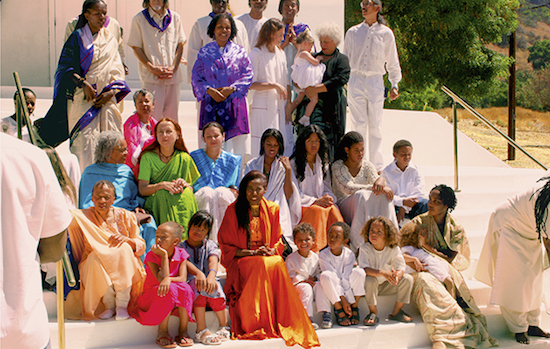
Alice Coltrane Turiyasangitananda
5. Ornette Coleman – Ornette at 12/Crisis (Real Gone Music)
They won’t win any awards for packaging, but Real Gone are doing the Lord’s work by putting these brilliant, relatively overlooked Ornette albums from 1969 out on CD for the first time. Ornette at 12 features the then 12-year-old Denardo Coleman on drums, while Crisis is a sensational live set that sees Don Cherry return to the fold.
4. Ton-Klami – Prophecy of Nue (No Business)
An otherworldly entry in No Business’s excellent Chap Chap series of Japanese live recordings. Best known for her ambient and minimalist work, percussionist Midori Takada dazzles as part of a free improvising trio with pianist Masahiko Satoh and singular alto saxophonist Kang Tae Hwan.
3. Brother Ah – Divine Music (Manufactured Recordings)
A 3CD set of unreleased albums, Divine Music spans the spiritual jazz of The Sea (1978), the ‘nature music’ of Meditation (1981), and the new age synth of Searching (1985). A must for fans of psychedelic jazz and leftfield ambient alike.
2. Byron & Gerald – Unity (Eremite)
Recorded in 1969, Unity is revelatory blast of underground free jazz from the little-known Washington DC scene. Boasting an incredible range of instrumental textures, this is ecstatic music of rare energy, invention and soul.
1. Alice Coltrane Turiyasangitananda – World Spirituality Classics 1: The Ecstatic Music of… (Luaka Bop)
Alice Coltrane’s devotional music finally sees a mainstream release. The music on this handsomely presented compilation reflect Coltrane’s inclusive vision of spirituality, as she infuses traditional Hindu bhajans (hymns) with jazz, cosmic synth and the gospel of her Detroit childhood. Glorious, inspirational music.

